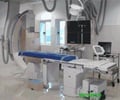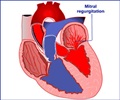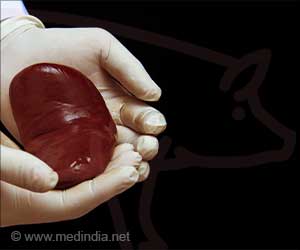A robotically assisted percutaneous coronary intervention system has been subjected to the first in-human study and has proved to be safe and feasible.

The current practice of percutaneous coronary intervention (PCI) still presents multiple limitations and potential hazards for both the patient (radiation exposure, contrast media use) and the operator (spine strain, accumulated radiation). According to the study, robotically-assisted PCI demonstrates the potential to decrease radiation exposure, contrast media usage and improve technical precision.
The study was led by Juan F. Granada, MD, Executive Director and Chief Scientific Officer of The Jack H. Skirball Center for Cardiovascular Research at the Cardiovascular Research Foundation and Giora Weisz, MD, Director of Clinical Cardiovascular Research at the Center for Interventional Vascular Therapy (CIVT) at New York-Presbyterian Hospital/Columbia University Medical Center.
"Use of robotics is a very exciting development in interventional cardiology," said Dr. Granada. "The operator is able to perform the procedure from a remote, radiation-protected control console. Initial experience with the use of this system demonstrated procedural effectiveness that was comparable to manual PCI."
In the study, a total of eight patients were enrolled in a single arm, open label, prospective study performed at the Corbic Research Institute (Corbic Institute, Envigado, Colombia). All patients had evidence of myocardial ischemia, documented de novo coronary stenosis, and clinical indication for PCI.
Using a remote system that is compatible and capable of advancing, retracting, and rotating 0.014" guidewires and rapid exchange catheter systems, the operator manipulates the interventional devices from a control console with joysticks while sitting comfortably at the radiation-shielded interventional cockpit.
Advertisement
All patients met the safety and technical success endpoint criteria. The robotic system demonstrated a performance success of 97.8% in completing 48 procedural steps (47 out of 48). There were no instances of in-hospital or 30 days follow-up MACE or any other device or procedure-related adverse events. In 7 of the 8 cases, the operators consistently scored the robotic performance as equal to manual operation. Compared to published data, average contrast media use was lower (159 ml vs. 250 ml). The operator exposure to radiation was 97% lower than at the table position (1.8±1.9 µGy vs. 61.6±55 µGy, p<0.01).
Advertisement
Results from this study will be presented during the Poster Abstracts Sessions from 1:00 PM – 3:30 PM in the Lower Level of the Washington Convention Center.
Source-Eurekalert









